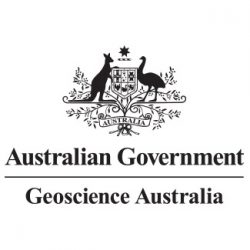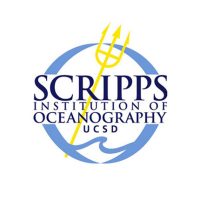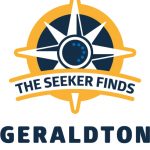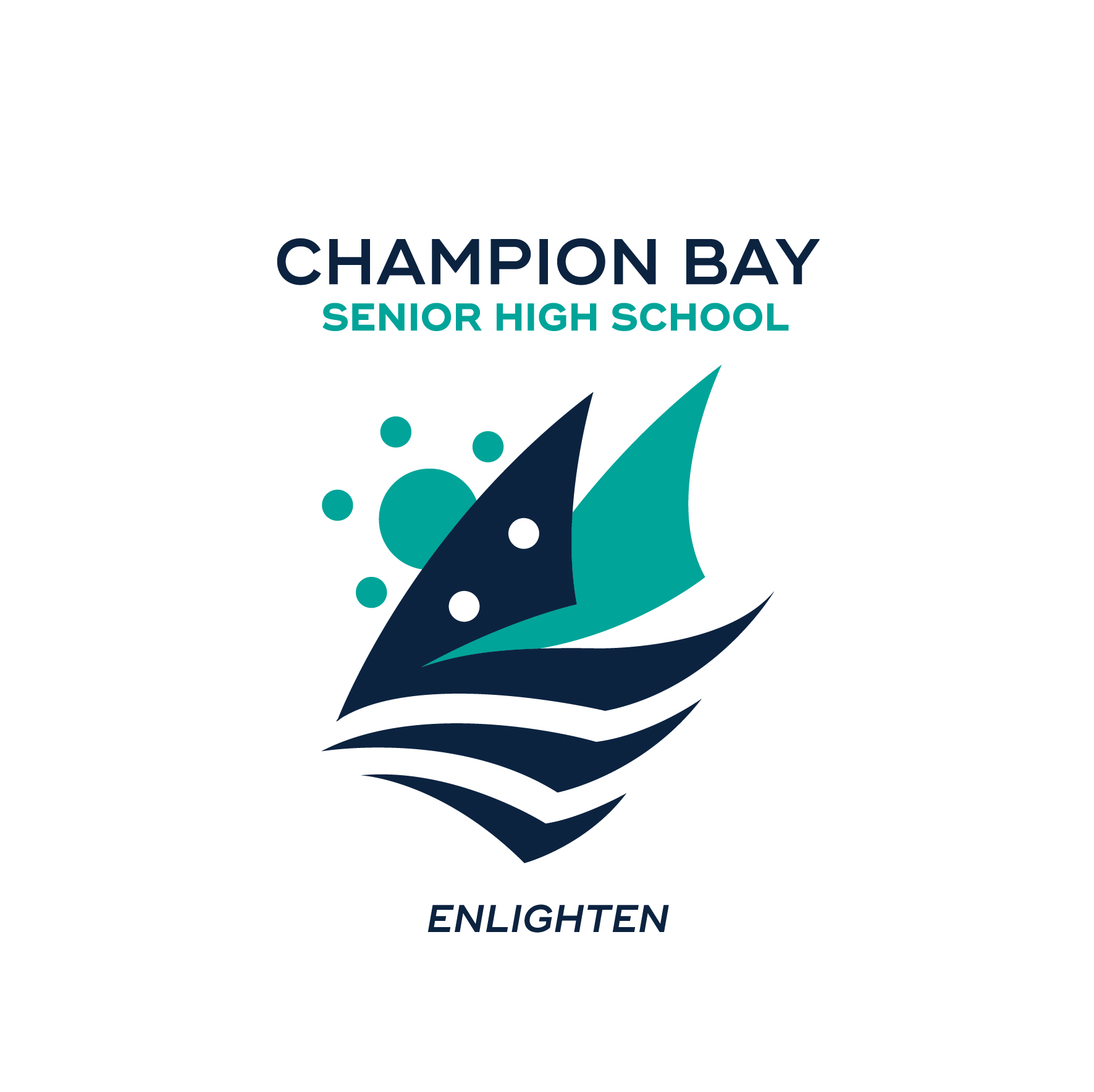Very few deep sea areas both in and outside of Australia have been well-sampled over large spatial and temporal scales, and a large number of species still remain undiscovered and unnamed. Following the first explorations of Bremer Bay and Perth Canyon, Falkor will bring ROV SuBastian to the Ningaloo Canyons. Dr. Nerida Wilson, of the Western Australian Museum, and her team will aim to identify and characterize the benthic biodiversity in Cape Range and Cloates Canyons and complement ROV surveys using environmental genetics (eDNA). In a country where there are little opportunities to explore the deep sea with a dedicated science ROV, this expedition will have a major impact in understanding this deep sea region.
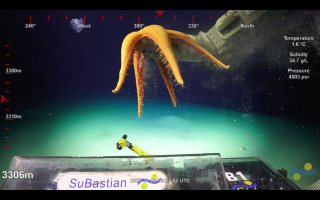
Biodiversity hotspots
The remote Western Australian coast (Eastern Indian Ocean) is known for its extensive karst system (sharp limestone ridges and towers in the landscape that are formed by erosion) and network of subterranean water bodies, supporting an incredible diversity of evolutionarily significant fauna. In stark contrast, the deep sea environment adjacent to this celebrated area remains almost unexplored. Major patterns of marine biodiversity appear to be strongly related to temperature, so exploring marine areas near known terrestrial hotspots offers an effective strategy for identifying undiscovered biodiversity. To counter the information deficit found in Western Australian coast, the interdisciplinary team on this expedition plans to actively survey a significant and biologically unexplored submarine canyon, Cape Range Canyon.
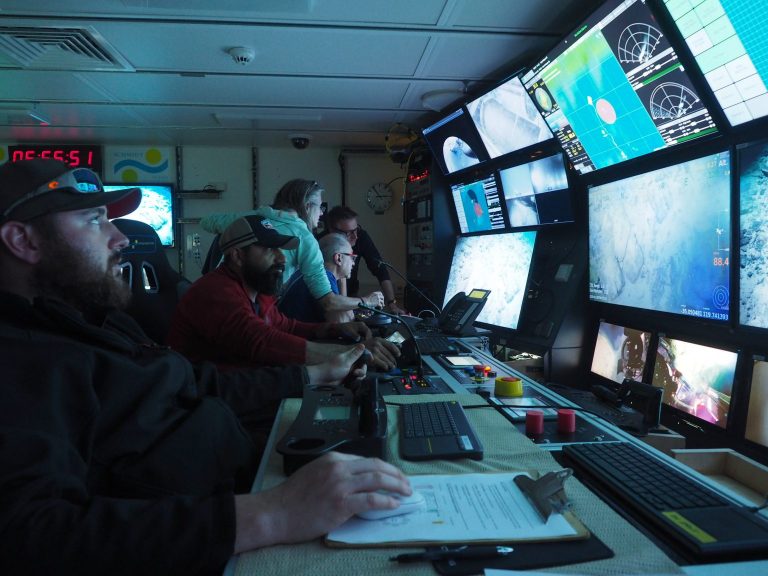
To get a true understanding of the area’s diversity, the science team will complement ROV SuBastian video surveys and collections with eDNA. This inventory will be helped by the use of eDNA (Environmental DNA), which refers to all the genetic material that can be recovered from an environmental sample. This cutting-edge technique can detect traces of animals left behind that may not be encountered during surveys and will serve as a comparison to more traditional techniques.
Mapping to Lead the Way
The ROV sampling will be guided by experts, as opposed to ‘blind’ grabs or trawls. This allows significant improvements in collection success, as well as re-collection on subsequent dives, and less environmental impacts. The team will also expand on the baseline seafloor mapping in the Gascoyne Marine Park to develop the regional context of canyon habitats in which to interpret the faunal inventory.

When the ROV is not in the water, R/V Falkor’s EM302 deepwater multibeam system will be used to map the seafloor. The resulting continuous high-resolution bathymetry and backscatter of the entire Cape Range Canyon (from head to abyssal fan) will help characterize habitats from which fauna are sampled.
The resulting faunal inventory is fundamental to a better understanding from which more robust ecological approaches can be developed. These areas are usually overlooked when policies are made. North-western Australian deep sea environments are broadly impacted by extraction by oil and natural gas industries. These industrial impacts are ‘out of sight, out of mind’, and an overall lack of understanding of these environments inhibits conservation actions. Understanding what biodiversity occurs in these zones is paramount to activating effective management processes.
Data & Publications
Annotated imagery is available in Squidle+. [You may have to create a username and password to access full capabilities]. To view images from this cruise, click SELECT DEPLOYMENTS, and choose FK200308.
Environmental sensor data collected by Falkor is archived at Rolling Deck to Repository.
Fluid Chemistry, CTD, Navigation and Eventlogger documentation collected by ROV Subastian is archived at Marine Geoscience Data Center.
Survey Bathymetry data is archived at AusSeaBed data portal.
Instructions on how to find the dataset:
Click on Layers in top menu. Select Map Layers > Elevation and Depth > Bathymetry – Survey > Cape Range Canyon Bathymetry 2020 64 m, then expand. Click ‘Add to Map’. Slide the Opacity bar from 0-100% to view change in coverage.
ADCP data has been processed and archived by UHDAS.
Species occurrence records from the Ningaloo Canyon have been published in the Atlas of Living Australia.
Genetic data about a new species of worm discovered during the expedition, Acrocirridae gen, n. sp. v PP-2023 is publicly available in NCBI.
Genetic data about a new species of worm discovered during the expedition, Teuthidodrilus gen, n. sp. v PPP-2023 is publicly available in NCBI.
- Post, A., Przeslawski, R., Huang, Z., Smith, D., Kirkendale, L. and N. Wilson. (2020). Gascoyne Marine Park - Post Survey Report, RV Falkor, FK200308. Report filed by Geoscience Australia.
- Post, A., Przeslawski, R., Nanson, R., Siwabessy, J., Smith, D., Kirkendale, L., and Wilson, N. G. (2022). Modern Dynamics, Morphology and Habitats of Slope-confined Canyons on the Northwest Australian Margin. Marine Geology, 443, doi: 10.1016/j.margeo.2021.106694. [This article has been published as OPEN ACCESS].
- Beaman, R., Picard, K., and Miller, A. (2022). RV Falkor Surveys in Australia 2020-2021. Oral Presentation and Conference Paper, Hydrospatial 2021 Conference, Australasian Hydrographic Society, Cairns, Australia. [Abstract and presentation are OPEN ACCESS].
- Wilson, N., Kirkendale, L., Hosie, A., Moore, G., Rouse, G., Richards, Z., et. al. (2022). An Illustrated Guide to the Fauna of the Ningaloo Canyons. Western Australian Museum. [The guide has been published as OPEN ACCESS].
- Przeslawski, R. (2022). Broad distribution of spider-shaped lebensspuren along the Australian continental margin. Frontiers in Marine Science, doi: 10.3389/fmars.2022.1086193. [This article is published as OPEN ACCESS].
- Final Expedition Report: Illuminating Biodiversity of the Ningaloo Canyons
- Przeslawski, R., Christenhusz, M. (2022). Deep-sea Discoveries. Zoological Journal of the Linnean Society, 194 (4), doi: 10.1093/zoolinnean/zlac022. [This article has been published as OPEN ACCESS.]
- Ekins, M., and Wilson, N. (2024). New carnivorous sponges (Porifera: Cladorhizidae) from Western Australia, collected by a Remotely Operated Vehicle (ROV). Scientific Reports, 14, 22173, doi: 10/1038/s41598-024-72917-8. [This article has been published OPEN ACCESS courtesy of SOI].
In the News
Where I Work- Greg Rouse
Nature • August 13, 2020
Where I Work- Andrew Hosie
Nature • May 28, 2020
Unsere populärwissenschaftlichen Geschichten von 2020
Nach Welt • December 25, 2020
The Wildest Animal News From 2020
The New York Times • December 23, 2020
The deep sea discoveries of 2020 are stunning
Mashable • December 23, 2020
2020’s top ocean news stories
Mongabay • December 21, 2020
THE TOP TEN OCEAN STORIES OF 2020
Smithsonian Magazine • December 17, 2020
Deep Ocean Studies Unlock Hidden Secrets
AltaSea.org • July 31, 2020
See what no human eyes have seen before deep in the sea off Western Australia
AEON • June 22, 2020
Remote ocean research during COVID-19
CSIRO-Double Helix • June 18, 2020
Scientists Capture Rare Footage of Australia’s Deep Sea
Yahoo News • June 16, 2020
Take a look at these amazing never-before-seen underwater creatures
In the Know Conservation • June 15, 2020
Take a look at these amazing never-before-seen underwater creatures
AOL video • June 15, 2020
Take a look at these amazing never-before-seen underwater creatures
Yahoo Life • June 15, 2020
World’s longest animal discovered in Australian waters
Science Focus • June 9, 2020
Raised from depths, a feast for the eyes
The Australian • June 6, 2020
New Species Discovered During the Exploration of Abyssal Deep Sea Canyons Off Ningaloo
Seven Seas Media • May 30, 2020
Hypnotic 4K Video of Life 14,750-Feet Underwater Will Leave You Breathless
Modern Met • May 29, 2020
Understanding the biodiversity of the Ningaloo Canyons in 4K
The Kid Should See This • May 27, 2020
惊艳迷人!璀璨的深海生物世界
QQ • May 26, 2020
Face to Face with Squat Lobsters
Nature • May 26, 2020
Mesmerizing 4K Footage of Deep Sea Creatures that Live in Unexplored Ningaloo Canyon
Petapixel • May 22, 2020
Spot on Science: 2020 Aquatic Update
IdeaStream • May 13, 2020
Science news in brief: From a deep-space mystery to the longest creature in the ocean
The Independent • April 30, 2020
The longest ocean creature may have just been discovered near Australia — and it looks like a giant galactic swirl
Business Insider • April 22, 2020
150-Foot Creature Discovered
BuzzFeed News • April 21, 2020
This could be the longest ocean creature ever recorded
EarthSky • April 21, 2020
Ocean Wonders 🌀Siphonophores
Parley.TV • April 21, 2020
Nightly News
Channel 9 • April 21, 2020
DEEP SEA EXPLORATION
GWN7 news • April 20, 2020
Drive with Richard Glover
ABC Radio • April 20, 2020
Deep sea expedition uncovers 30 new species, plus longest-known animal
Daily Times • April 20, 2020
Hewan Terpanjang di Dunia Ditemukan di Perairan Australia
National Geographic Indonesia • April 20, 2020
Scientists discover what may be the longest animal on Earth in waters off Western Australia
South China Morning Post • April 19, 2020
Scientists in Australia Discover Enormous Worm-like Ocean Creature
The Great Courses Daily • April 19, 2020
Scientists just discovered the longest animal on Earth – and hardly anyone has ever heard of it
Indy100 • April 19, 2020
LONGEST ‘SEA WORM’ FOUND OFF AUSTRALIA
Divernet • April 19, 2020
Descobreixen el que podria ser l’animal més llarg del món
NacióDigital • April 19, 2020
This May Be The Longest Animal On Earth – And You’ve Probably Never Heard Of It
Forbes Magazine • April 18, 2020
An estimated 150-foot siphonophore discovered off Australia
Reuters Facebook • April 18, 2020
Animal más grande del mundo es descubierto en Australia: ¿mide 46 metros?
La Verdad • April 18, 2020
World’s longest creature’ discovered in ocean depths off Western Australian coast
Canada News • April 18, 2020
World’s longest sea creature found off Australian coast
Digital Journal • April 18, 2020
Australia, ecco l’aniimale più lungo del mondo: la scoperta negli abissi
Il Secolo XIX • April 18, 2020
Move Aside Blue Whales! This Spiral Siphonophore May Be The Longest Animal Ever Recorded
Republic World • April 17, 2020
Longest animal ever’ discovered off Western Australia’s coast
SBS • April 17, 2020
World’s longest creature’ discovered in ocean depths off Western Australian coast
AOL • April 17, 2020
The Longest Creature In The World Found Off The West Australian Coast!
6PR Radio • April 17, 2020
Forscher entdecken das längste Tier der Welt in australischer Tiefsee
Noizz • April 17, 2020
世界最長」46米神祕海洋生物 直擊悠遊深海閃耀銀色微光
Yahoo • April 17, 2020
Scoperto un organismo marino da record, è lungo 45 metri
Sky Tg24 • April 17, 2020
Australia, scoperta la creatura marina più lunga degli abissi: è un sifonoforo di 46 m
Rai News • April 17, 2020
Längsta djuret fångat på bild
Havet • April 17, 2020
Animal mais comprido do mundo descoberto na Austrália
TVi24 • April 17, 2020
Un organisme marin de 45 m serait le plus long animal vivant
Science & Vie • April 17, 2020
Giant string-like creature composed of “millions of interconnected clones” found off the coast of Australia
Boing Boing • April 16, 2020
Descoberto animal mais comprido do mundo na costa da Austrália
Planeta • April 16, 2020
Близ Австралии обнаружили 47-метровое существо
Korrespondent • April 16, 2020
Hewan Terpanjang di Dunia Ditemukan di Laut Australia
Ayobandung • April 16, 2020
Tauchexpedition filmt eine 47-Meter-Qualle
Der Standard • April 16, 2020
Newsday Radio
BBC • April 16, 2020
El animal más largo del mundo y otras 30 nuevas especies
Reconectar • April 16, 2020
Scientists ‘Blown Away’ By Discovery of Longest Animal Ever Recorded—And It’s Quite Beautiful
Good News Network • April 16, 2020
Siphonophore, believed to be world’s longest sea creature, found off Ningaloo Canyons in WA
The Western Australian • April 16, 2020
Could the world’s longest creature live off the Western Australian coast?
ABC • April 16, 2020
This ‘really strange’ spiralling sea creature may be the longest animal in the ocean
CBC Radio • April 16, 2020
Hewan Terpanjang di Dunia Ditemukan, Panjangnya Mencapai 45 Meter!
Hai Grid • April 16, 2020
Phát hiện động vật dài nhất hành tinh
Baoh Ha Tinh • April 16, 2020
Siphonophore, considéré comme la plus longue créature marine du monde, découvert au large des canyons de Ningaloo en WA
Urban Fusions • April 16, 2020
பெருங்கடலில் மிதக்கும் உலகின் மிகப்பெரிய ராட்சஸ உயிரனம் கண்டுபிடிப்பு! வியப்பில் ஆழ்த்திய உருவம்!
Tamil Gizbot • April 16, 2020
The Longest Creature Ever Discovered Was Found in the Deep of the Australian Coast
Gentside • April 16, 2020
Phát hiện loài vật dài nhất đại dương, gần 50m
tuoi tre • April 16, 2020
Scientists Have Found the Longest Marine Organism on Australia’s Western Edge
The Swaddle • April 16, 2020
Stunning! 47m-long siphonophore discovered off Australian coast
CGTN • April 16, 2020
Siphonophore, believed to be world’s longest sea creature, found off Ningaloo Canyons in WA
Perth Now • April 16, 2020
Researchers Discover Longest Sea Organism Ever in Deep Canyons of Western Australia
The Weather Channel • April 16, 2020
V austrálskych vodách objavili najdlhšieho živočícha na Zemi. Meria takmer 46 metrov
Interez • April 16, 2020
In Australia’s Deep: ‘We Couldn’t Believe What We Were Seeing’
Newser • April 15, 2020
Une créature de 47 mètres de long découverte au large de l’Australie
Metro Time • April 15, 2020
Ilmuwan Temukan Hewan Terpanjang di Dunia di Laut Dalam Australia
Manando Tribune • April 15, 2020
Con la suspensión de los safaris por la COVID-19, surge la amenaza de la caza furtiva
National Geographic Spain • April 15, 2020
La “plus longue créature” du monde repérée au large de l’Australie
7sur7 • April 15, 2020
Scientíficos Descubren un ‘OVNI’ parecidos a la Criatura En Aguas Australianas, Potencialmente más largo del Mundo Animal
Loving Valencia • April 15, 2020
Ilmuwan Temukan Binatang Terpanjang di Dunia, Capai 45 Meter
Suara.com • April 15, 2020
It’s 150 feet long– and we’re not talking about a flying car!
WRBL • April 15, 2020
Odkrili najdaljše znano bitje na svetu, ki je videti kot »spiralni NLP«
Svet24 • April 15, 2020
‘Like a spiral UFO’: world’s longest animal discovered in Australian waters
The Guardian • April 15, 2020
Ανακαλύφθηκε στα βάθη της θάλασσας το μακρύτερο ζώο στη Γη
Huffington Post Greece • April 14, 2020
New Species Discovered during Exploration of Abyssal Deep Sea Canyons off Ningaloo
ROV Planet • April 14, 2020
Siphonophores: the longest animals on the planet – in pictures
The Guardian • April 14, 2020
The Longest Animal Ever Has Just Been Discovered
Dual Dove • April 14, 2020
‘Longest animal ever’ discovered off Australia’s coast
Fox News • April 14, 2020
Hewan Terpanjang Sedunia Ditemukan di Laut Dalam Australia
Kompas • April 14, 2020
Este es el segundo animal más largo del mundo: mide casi 50 metros
La Vanguardia • April 14, 2020
World’s ‘Longest Animal’ Discovered in Australia’s Deep Ocean
EcoWatch • April 14, 2020
Deep sea expedition uncovers 30 new species, plus longest-known animal
New Atlas • April 14, 2020
Scientists discover ‘longest living’ creature off Australian coast
The Jerusalem Post • April 14, 2020
This Might Be the Longest Creature Ever Seen in the Ocean
The New York Times • April 14, 2020
120 metrelik dünyanın en uzun canlısı keşfedildi
dokuz8HABER • April 14, 2020
Descubren 30 nuevas especies submarinas en Australia
Muy Interesante • April 14, 2020
Staatsqualle: Forscher filmen gigantische Meereskreatur vor Australien
Stern • April 14, 2020
The longest animal ever discovered in the Indian Ocean
Tech Explorist • April 13, 2020
この線みたいなやつ、生きてます
Yahoo Japan • April 13, 2020
Longest animal ever’ discovered in deep-sea canyon off Australian coast
Live Science • April 13, 2020
VÍDEO El animal más largo jamás registrado, filmado en el fondo del Índico
Europa Press • April 13, 2020
A 390-foot, string-like sea creature was spotted off the coast of Australia
Matador Network • April 13, 2020
The longest animal ever discovered in the Indian Ocean
Tech Explorist • April 13, 2020
Bizarre, Borg-Like Deep Sea Predator is Composed of Millions of Clones
SyFy • April 12, 2020
New species discovered during exploration of abyssal deep sea canyons off Ningaloo
Science Daily • April 12, 2020
Watch What Scientists Believe Is Longest-Ever Organism
Sputnik News • April 11, 2020
L’OVNI des océans : une mystérieuse créature filmée au large de la côte ouest australienne
L’Independant • April 10, 2020
Australie : une gigantesque créature aperçue au large des côtes
Le Point • April 10, 2020
Qué es el extraño y gigante ser hallado flotando en el Océano Índico
ABC ES • April 10, 2020
Berbentuk Spiral dan Mirip UFO, Hewan Unik Ini Berhasil Diamati Ilmuwane
Hitekno • April 10, 2020
ऑस्ट्रेलिया: समुद्र के नीच दिखा UFO-जैसा क्रिएचर, जानें क्या होता है Siphonophore
India Times • April 10, 2020
Un Ovni marin découvert en Australie
Futura Planete • April 10, 2020
Scientists May Have Just Discovered the Longest Animal And it is Found in the Indian Ocean
News 18 • April 10, 2020
Scientists May Have Just Discovered the Longest Animal And it is Found in the Indian Ocean
DB Post • April 10, 2020
This 50-Foot-Wide Spiral Shaped Creature Feeding 2,000 Feet Deep Is Totally Not An Alien, You Guys
brobilble • April 10, 2020
Giant string-like creature “Siphonophores” spotted near Australian coast
TeCake • April 10, 2020
Massive, deep-sea ‘entity’ leaves ocean scientists ‘blown away’
Global News • April 9, 2020
Alien-Like Sea Creature Could Be Longest Animal Ever Discovered
International Buisness Times • April 9, 2020
Watch This Giant, Eerie, String-Like Sea Creature Hunt for Food in the Indian Ocean
Smithsonian Magazine • April 9, 2020
Giant Alien-like String Creature Found On The Hunt. What is it?
ITech • April 9, 2020
Australian Scientists Discover Massive Deep Sea Predator That Looks Like Silly String
DOGO News • April 9, 2020
Giant Ocean Creature Looks like UFO
The Weather Channel • April 9, 2020
This Freaky Spiral Thing is Alive
Gizmodo • April 9, 2020
Longest Giant Stringy Sea Creature Ever Recorded Looks like It Belongs in Outer Space
Interesting Engineering • April 9, 2020
Watch: Gigantic Deep-Sea Siphonophore Filmed Off Western Australia
Dive Photo Guide • April 9, 2020
Stories worth watching 4/8/20
CNN 10 • April 8, 2020
Mærkeligt dyr i havet: 47 meter langt
Ekstra Bladet • April 8, 2020
Scientists spot giant ocean creature that looks like silly string hunting in ‘galaxy-like spiral’
USA Today • April 8, 2020
Scientists Discover Giant String-Like Sea Creature
Medical Daily • April 8, 2020
Wow! Scientists Discover Massive Creature in the Indian Ocean
WSPA • April 8, 2020
Giant sea creature—154 feet—filmed off Australia coast. It’s a jelly species
The Sacramento Bee • April 8, 2020
Посмотрите на огромную ленту из соединенных зооидов, живущих в океане у Австралии
XANTEK • April 8, 2020
Massive Silly String-like creature spotted in Indian Ocean
Syracruse • April 8, 2020
Scientists Blown Away by Bizarre 150 feet Long String-Like Sea Organism Spotted in Australia
Infosurhoy • April 8, 2020
Wat is dit Voor Vreemde Hypnotiserende Slinger die in de Oceaan Drifjft?
welingelichtekringen • April 8, 2020
Mysterious Sea Monster Thrills Researchers
Webby Feed • April 7, 2020
The carnivorous creature is 47 meters long in the deep sea
VN Express • April 8, 2020
Captan un gigantesco sifonóforo de 47 metros flotando en el océano
RT • April 8, 2020
Mad Minute stories from April 7th
NBC KHQ 6 • April 7, 2020
Scientists find massive ‘silly string’ creature in the deep sea
KXLY • April 7, 2020
Scientists find huge ocean creature that looks like silly string
AZ Family • April 7, 2020
Animal Stories with Dan Green: a giant siphonophore
KSBW 8 • April 8, 2020
What the Heck Is This Long Hypnotic Stringy Floating in the Ocean
Science Alert • April 8, 2020
Mysterious 150-foot deep sea is actually millions of tiny clones
Metro UK • April 8, 2020
Creepy 154 foot long silly string creature found in the deep sea
The Weather Network • April 8, 2020
Giant stringy creature
Bing • April 8, 2020
Giant Ocean Creature Found Hundreds of Meters Underwater Off Australian Coast
Yahoo • April 7, 2020
Scientists spot giant ocean creature that looks like silly string hunitn in ‘galaxy like spiral’
USA Today • April 8, 2020
Scientists have found a giant ‘silly string-like creature’ in the ocean
Fox 8 • April 7, 2020
Scientists discover massive ‘silly string’ creature in the ocean
WHP • April 7, 2020
Ученые засняли гигантскую сифонофору
Popular Mechanics Russia • April 7, 2020
Scientists discover giant ‘silly-string’-like sea creature
9 News Perth • April 7, 2020
Scientists find giant ocean creature that looks like silly string
NBC Tampa • April 7, 2020
Video: Scientists find huge ocean creature that looks like silly string
WFSB • April 7, 2020
Video: Scientists find huge ocean creature that looks like silly string
Fox Carolina • April 7, 2020
This incredible jellyfish seems to come from a science fiction film
Huff Post • April 7, 2020
This Deep Sea ‘Giant’ is Actually Made up of Millions of ‘Clones’
New York Post • April 7, 2020
Massive ‘Silly String-like’ creature spotted in Indian Ocean
Penn Live • April 7, 2020
Ningaloo Canyons deep sea mission reminds us where the true nightmares live
Slash Gear • April 7, 2020
Scientists find massive ‘silly string’ creature in deep sea
CNN • April 7, 2020
See a giant siphonophore, a bizarre ocean creature that looks like silly string
CNet • April 6, 2020
This sea creature looks like a beautiful flower
MSN GeoBeats • March 22, 2020
Perth Researchers Head to Uncharted Waters
7NEWS Perth • March 7, 2020
Australian Scientists to View Underwater Ningaloo Canyons for First Time
AZo Cleantech • March 6, 2020
Illuminating the biodiversity of the Ningaloo Canyons
Western Australian Museum News • March 4, 2020

